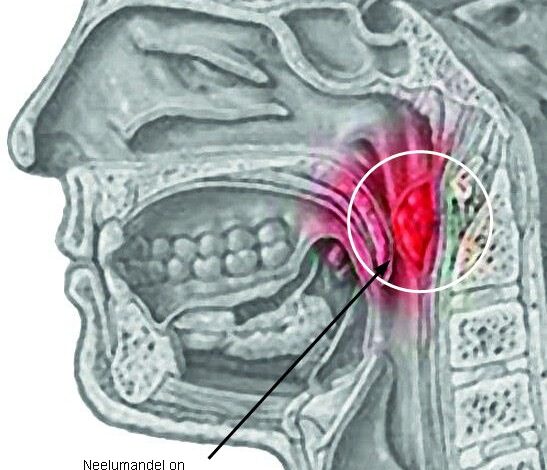Adenoidid: Causes, Symptoms, and Effective Treatments

Adenoidid is a condition that affects the adenoids, which are small masses of lymphatic tissue located at the back of the nasal passage. These tissues play an important role in the immune system, especially during childhood, by helping to fight infections. However, when the adenoids become swollen or infected, it can lead to a range of health issues. Understanding adenoidid, its symptoms, causes, and treatments, is essential for ensuring good respiratory and overall health in children and even some adults.
What is Adenoidid?
Adenoidid is the inflammation or infection of the adenoids. This condition usually affects children between the ages of 2 and 8, though older children and adults may occasionally experience it. Since adenoids are part of the body’s immune defense system, they naturally react to infections caused by viruses or bacteria. In some cases, the adenoids may remain enlarged, leading to breathing difficulties, recurrent ear infections, and disturbed sleep.
Causes of Adenoidid
Several factors can contribute to the development of adenoidid. Some of the most common causes include:
1. Bacterial and Viral Infections
Children are particularly prone to infections due to their developing immune systems. Common cold viruses, influenza, and bacterial infections like streptococcus can cause swelling in the adenoids.
2. Allergic Reactions
Seasonal allergies or sensitivities to dust, pollen, or pet dander can irritate the adenoids, leading to persistent swelling.
3. Recurrent Tonsillitis
Since the tonsils and adenoids are located close to each other and perform similar immune functions, chronic tonsillitis can increase the likelihood of adenoidid.
4. Genetic Factors
Some children may have a hereditary tendency toward larger adenoids, making them more prone to inflammation.
Symptoms of Adenoidid
The signs of adenoidid may vary depending on its severity. Some of the most common symptoms include:
-
Nasal congestion: Constant stuffy or blocked nose.
-
Mouth breathing: Difficulty in breathing through the nose forces children to breathe through the mouth.
-
Snoring: Enlarged adenoids often cause loud breathing or snoring during sleep.
-
Recurrent ear infections: Swollen adenoids can block the Eustachian tubes, leading to fluid buildup in the middle ear.
-
Sore throat: Persistent irritation due to infection.
-
Sleep disturbances: Interrupted sleep patterns, sleep apnea, or restless nights.
-
Difficulty swallowing: Swollen adenoids can interfere with normal swallowing.
Recognizing these symptoms early is crucial for preventing complications.
Diagnosis of Adenoidid
To confirm adenoidid, healthcare professionals may use several diagnostic methods, such as:
-
Medical history and physical examination: The doctor evaluates symptoms like breathing difficulty and recurrent infections.
-
Endoscopy: A small, flexible tube with a camera is inserted through the nose to view the size and condition of the adenoids.
-
X-rays: Imaging tests can reveal enlarged adenoids and their impact on the airway.
-
Hearing tests: If ear infections are frequent, hearing ability is also assessed.
Treatment Options for Adenoidid
Treatment for adenoidid depends on the severity of the condition. Some children may recover with medication, while others require surgery.
1. Medications
-
Antibiotics: Prescribed if the infection is bacterial.
-
Nasal sprays: Steroid sprays can help reduce swelling.
-
Antihistamines: Useful for allergy-related adenoidid.
2. Home Remedies
-
Warm fluids, steam inhalation, and keeping the air moist with a humidifier can ease discomfort.
-
Proper rest and hydration support the immune system in fighting infections.
3. Surgery (Adenoidectomy)
If the adenoidid is chronic or causes serious problems such as obstructed breathing, recurrent ear infections, or sleep apnea, doctors may recommend removing the adenoids. Adenoidectomy is a common and safe procedure with minimal recovery time.
Complications of Untreated Adenoidid
If left untreated, adenoidid can lead to several health issues, including:
-
Chronic ear infections that may affect hearing.
-
Obstructive sleep apnea, leading to poor sleep quality.
-
Speech difficulties caused by nasal obstruction.
-
Facial development issues in children due to prolonged mouth breathing.
Prompt diagnosis and treatment can prevent these complications.
Prevention of Adenoidid
Although not all cases can be prevented, certain lifestyle practices can lower the risk of adenoidid:
-
Encourage good hygiene to minimize exposure to infections.
-
Manage allergies with proper medication.
-
Keep the environment clean and dust-free.
-
Strengthen immunity through a balanced diet and adequate sleep.
Living with Adenoidid
For many children, adenoidid is a temporary condition that resolves with age, as the adenoids naturally shrink during adolescence. However, for those who experience severe or persistent symptoms, medical intervention ensures a better quality of life. Parents should monitor their child’s breathing patterns, sleeping habits, and frequency of infections, and consult a healthcare professional when necessary.
Conclusion
Adenoidid is a common condition among children that can affect breathing, hearing, and overall health. While mild cases may resolve with medication and home remedies, persistent or severe may require surgical treatment. Early recognition of symptoms, timely diagnosis, and effective management are key to preventing complications. By taking preventive measures and seeking proper care, children with adenoidid can enjoy a healthier and more comfortable life.




